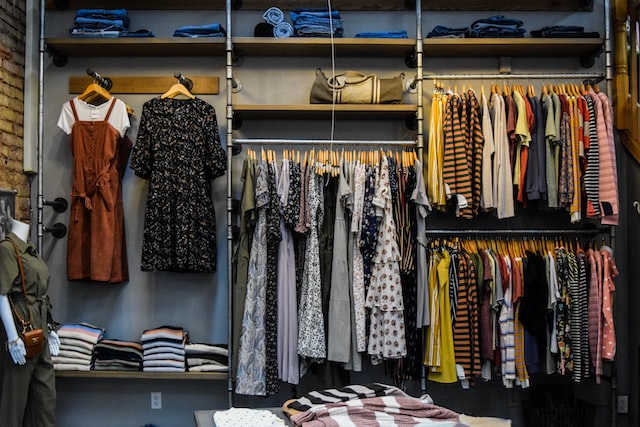Planogram is a tool used by retailers and manufacturers to help maximize the sales of a product by strategically arranging products on store shelves. This article will provide an overview of a planogram, the different types of planograms, the benefits of using planograms, and how planograms are used.
Table of Contents
Definition of Planogram
A planogram is a diagram that shows the placement of products and merchandise on store shelves. Manufacturers and retailers use it to maximize the visibility and sales of their products. The planogram is designed to help customers easily find and purchase items.
Types of Planograms
There are three main types of planograms:
- Static
- Dynamic
- Interactive
Static planograms remain unchanged over time, while dynamic planograms are designed to be changed regularly. Interactive planograms are intended to be adjusted by customers.
Benefits of Planograms
Planograms can help retailers and manufacturers increase sales and profits by ensuring that their products are visible and easily accessible to customers. Additionally, planograms help increase customer satisfaction by providing an organized and aesthetically pleasing environment.
How Planograms are Used Planograms are used by retailers and manufacturers to arrange products on store shelves. They determine the best placement for products based on customer demand.
A planogram is a visual plan that indicates the location of products on shelves and merchandise in a retail store. The planogram is usually created by a television producer or an advertising/marketing/sales team member. Historically, plan images have been distributed as a diagram or blueprint. Still, planets can increasingly be managed digitally using tablets, mobile phones, and photographic images.
Planning creates consistency between stores in the most significant US retail chains, provides proper storage space allocation, improves visual appeal, and creates product pairing recommendations. The program’s ultimate goal is to guide and focus on store mediation, which should lead to increased retail sales.
- Also known as POG
- Alternative spelling: plan-o-gram
- Common spelling mistakes: planogram
- Uses and examples of planograms: The retail merchandiser ensures that the manufacturer’s products are displayed appropriately and by the designated plan language.
Why planning is essential in business
A planogram is a store plan designed to put the floor plan to maximum use by placing things in a way that makes them sell. A planogram is a consistent and accurate sales layout for your store. Planograms ensure that thinking and planning are involved in the design, placement, and execution of product plans, including storage space allocation.
The plan is to ensure that each retailer is optimized to sell the items they offer. Planograms provide specific instructions to employees to continue to fulfill rehabilitation and transportation tasks. Both employees and customers need to know precisely where things are located so they can be found and purchased.
Plans are essential with the largest retail chains with hundreds and sometimes thousands of physical bricks and mortar. Using a planogram, each store in the chain can have a very similar layout with customized merchandising strategies that reflect regional preferences.
Retail chains like Macy’s are using planograms to guide employees in implementing a regional “My Macy’s” strategy. In the case of retail chains such as 7-11 convenience stores and Costco Warehouse stores, it is essential that customers can shop in any process in any store and find a similar, if not identical, layout so that they can easily find the product that they want to buy with ease.
Planners can help improve sales with a visual product plan that displays products in a way that encourages a customer to buy. If a customer comes in to buy one item, a well-merchandised store that follows a well-planned plan will encourage shoppers to buy more products they didn’t even know they wanted or needed. Similarly, customers who buy a particular product will find options and choices merchandised strategically that could lead to the termination of purchases that the customer did not want to know about.
How often do suppliers change their planograms?
Plans are distributed to retailers in large retail chains at least once per quarter, as seasonal merchandise is divided into the product mix. A new planogram will also be distributed to showcase new products, spotlight products on promotional tours, and highlight slow-moving products.
Often, different plan metrics will be tested at other locations to determine the most effective version of the plan, which will then be distributed and implemented by all stores. Generally, a plan item needs an update when the current storefront no longer seems to engage shoppers or encourage purchase.

How Retailers Create Planograms
To create a planogram, you will usually work with a software package. There are many different options out there to choose from. This software suite will have the layout for your store printed on it. In this setup, you, or the computer, will organize products where they belong. The products are marked on the map so those setting up the shop can easily find what they are looking for.
Who creates the plan?
In smaller retail chains, managers and registration boards usually have program limits that register, and fulfill or bankruptcy implements them. In large retail chains such as Best Buy, plans will be created by district, regional, or headquarters.
Store and category managers can provide important information about the practical implementation of the program and customer response to it. Category Managers and Merchandising Specialists will often use this type of field input along with sales and inventory statistics to make changes to merchandising strategies, which are reflected in the new plan.
Many people think that a plan is unrealistic because it requires work to develop and implement. There is lots of planogram software available to help you create a planogram. The work needed to develop a strategic plan is worthwhile because it will maximize the productivity of each retail store area and support retail employees at all levels in executing an effective merchandising strategy.
Conclusion
Planograms are an essential tool for retailers and manufacturers. They are used to maximize the visibility and sales of products by strategically arranging products on store shelves. Planograms can help increase sales and profits and improve customer satisfaction.









Leave a Reply